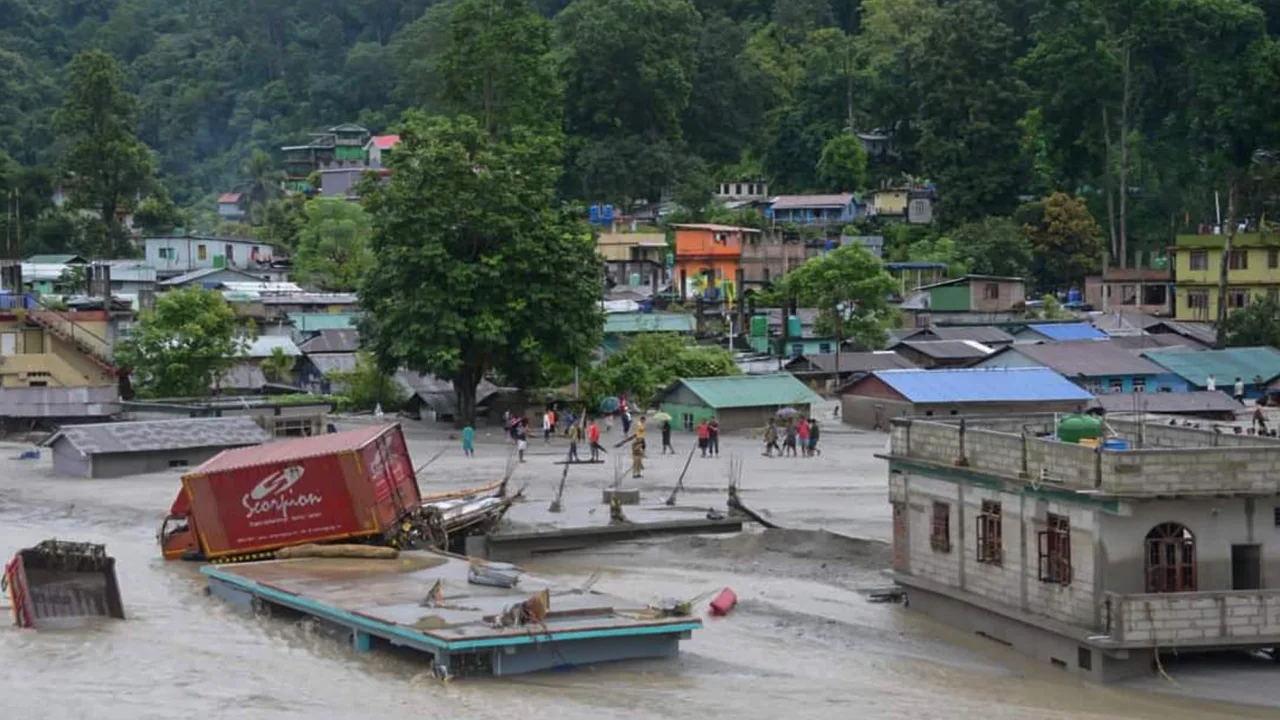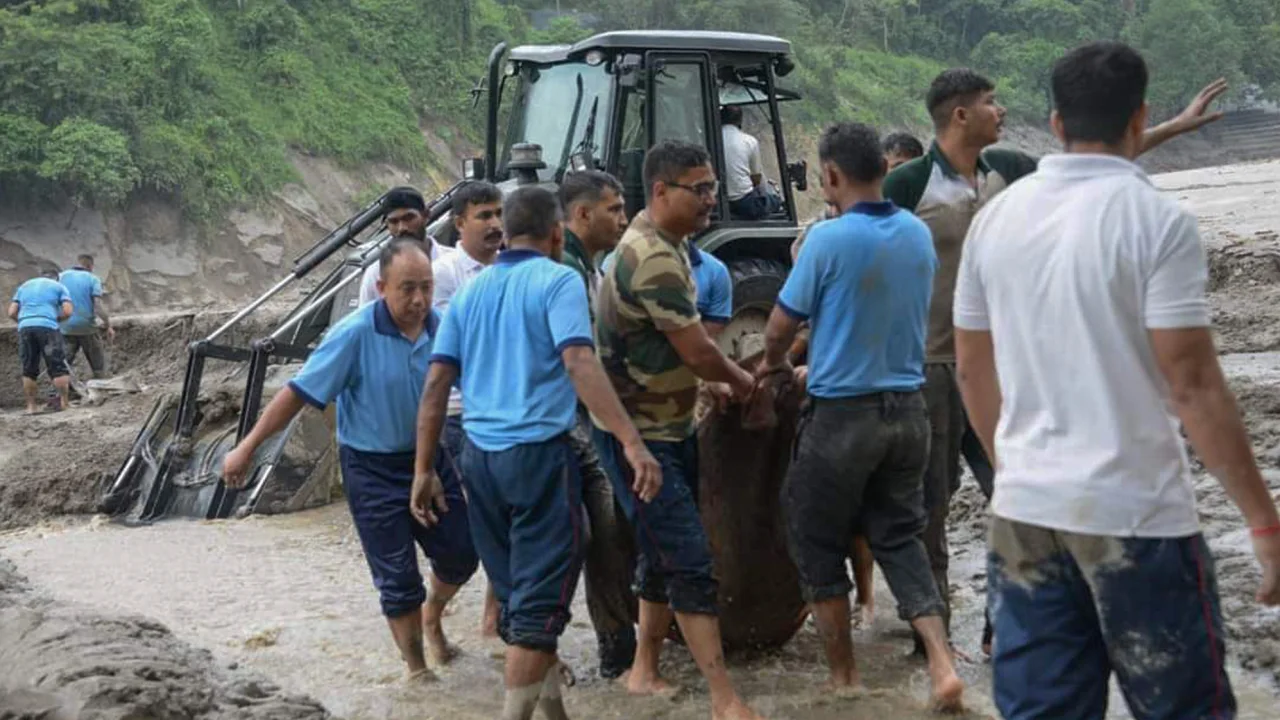Devastating Himalayan Glacial Lake Outburst In India Claims 14 Lives, Leaves Over 100 Missing
On October 5th, 2023, a devastating Himalayan glacial lake outburst in India claims 14 lives, leaves over 100 missing, making it the worst such disaster in the region in over half a century.
Author:Suleman ShahReviewer:Han JuOct 06, 20234.1K Shares115.5K Views

On October 5th, 2023, a devastating Himalayan glacial lake outburst in India claims 14 lives, leaves over 100 missing, making it the worst such disaster in the region in over half a century.
Heavy rains triggered the bursting of a Himalayan glacial lake, leading to catastrophic flash floods and landslides.
At least 18 people lost their lives, and nearly 100 were reported missing
Lhonak Lake Overflow
Lhonak Lake, located in Sikkim state, overflowed on October 4th, 2023, due to a "sudden cloudburst." This event caused significant flooding, impacting the lives of approximately 22,000 people.
The disaster highlights the vulnerability of mountainous regions to the effects of climate change. Such incidents in South Asia's mountainous areas are increasingly attributed to the changing climate.
The Indian Meteorological Department reported that Sikkim experienced 101 mm (4 inches) of rain in the first five days of October.
This amount was more than double the normal levels, resulting in floods worse than those in October 1968 when an estimated 1,000 people lost their lives.
The department has also forecasted heavy rainfall in the region for the coming days, adding to the ongoing challenges.
Damaged Infrastructure And Missing Persons
The flooding was exacerbated by the release of water from the Teesta V dam, operated by the state-run NHPC.
Local officials reported that four of the dam's gates had been washed away, raising questions about the timing of gate operations.
As of the latest update, 98 people were missing, including 17 army personnel. The floods washed away 14 bridges, further hampering rescue operations already challenged by relentless rain.
Neighboring Bangladesh is on high alert, as the Teesta River flows into Bangladesh downstream of Sikkim. The rise in the Teesta River's level could potentially inundate five districts in the northern part of Bangladesh.
The situation in Sikkim has been described as "slightly grim" by Prabhakar Rai, the director of Sikkim's State Disaster Management Authority.
Bad weather conditions have hindered rescue operations, and communication disruptions have added to the challenges.
Approximately 2,500 tourists are stranded in and around Chungthang town in Mangan district. Fortunately, they are in safe locations and will be evacuated by air once the weather conditions improve.
The state tourism department has advised potential visitors to postpone their trips to Sikkim. Efforts to evacuate those stuck in Mangan district are set to commence when the weather allows.
Satellite imagery has provided crucial insights into the disaster. It revealed that a significant portion of Lhonak Lake had drained following the cloudburst.
Lhonak Lake, a glacial lake at the foot of a melting glacier, has been identified as one of the fastest-swelling glacial lakes in the region, posing a high risk of glacial outburst.
Past expeditions and studies have highlighted this risk and called for mitigation measures.
Climate Change And The Vulnerability Of Himalayan Glaciers
The Himalayan region is particularly vulnerable to the impacts of climate change. Himalayan glaciers feed into rivers that provide freshwater to billions of people.
Rising temperatures have led to accelerated glacier melting, heightening the risk of floods, landslides, avalanches, and droughts.
As glaciers around the world continue to melt, the risk of catastrophic glacial lake outbursts increases.
The recent disaster underscores the urgent need for improved disaster preparedness and climate adaptation strategies in the region.
Policymakers and disaster management departments must equip themselves to respond effectively to such crises, given the heightened risk of extreme weather events.
Final Words
The bursting of the Himalayan glacial lake in Sikkim serves as a stark reminder of the profound impact of climate change on vulnerable regions.
It highlights the immediate need for climate mitigation and adaptation measures to safeguard communities in the Himalayan region and beyond.
The tragedy also emphasizes the importance of early warning systems and disaster preparedness in the face of increasing climate-related disasters.

Suleman Shah
Author
Suleman Shah is a researcher and freelance writer. As a researcher, he has worked with MNS University of Agriculture, Multan (Pakistan) and Texas A & M University (USA). He regularly writes science articles and blogs for science news website immersse.com and open access publishers OA Publishing London and Scientific Times. He loves to keep himself updated on scientific developments and convert these developments into everyday language to update the readers about the developments in the scientific era. His primary research focus is Plant sciences, and he contributed to this field by publishing his research in scientific journals and presenting his work at many Conferences.
Shah graduated from the University of Agriculture Faisalabad (Pakistan) and started his professional carrier with Jaffer Agro Services and later with the Agriculture Department of the Government of Pakistan. His research interest compelled and attracted him to proceed with his carrier in Plant sciences research. So, he started his Ph.D. in Soil Science at MNS University of Agriculture Multan (Pakistan). Later, he started working as a visiting scholar with Texas A&M University (USA).
Shah’s experience with big Open Excess publishers like Springers, Frontiers, MDPI, etc., testified to his belief in Open Access as a barrier-removing mechanism between researchers and the readers of their research. Shah believes that Open Access is revolutionizing the publication process and benefitting research in all fields.

Han Ju
Reviewer
Hello! I'm Han Ju, the heart behind World Wide Journals. My life is a unique tapestry woven from the threads of news, spirituality, and science, enriched by melodies from my guitar. Raised amidst tales of the ancient and the arcane, I developed a keen eye for the stories that truly matter. Through my work, I seek to bridge the seen with the unseen, marrying the rigor of science with the depth of spirituality.
Each article at World Wide Journals is a piece of this ongoing quest, blending analysis with personal reflection. Whether exploring quantum frontiers or strumming chords under the stars, my aim is to inspire and provoke thought, inviting you into a world where every discovery is a note in the grand symphony of existence.
Welcome aboard this journey of insight and exploration, where curiosity leads and music guides.
Latest Articles
Popular Articles
